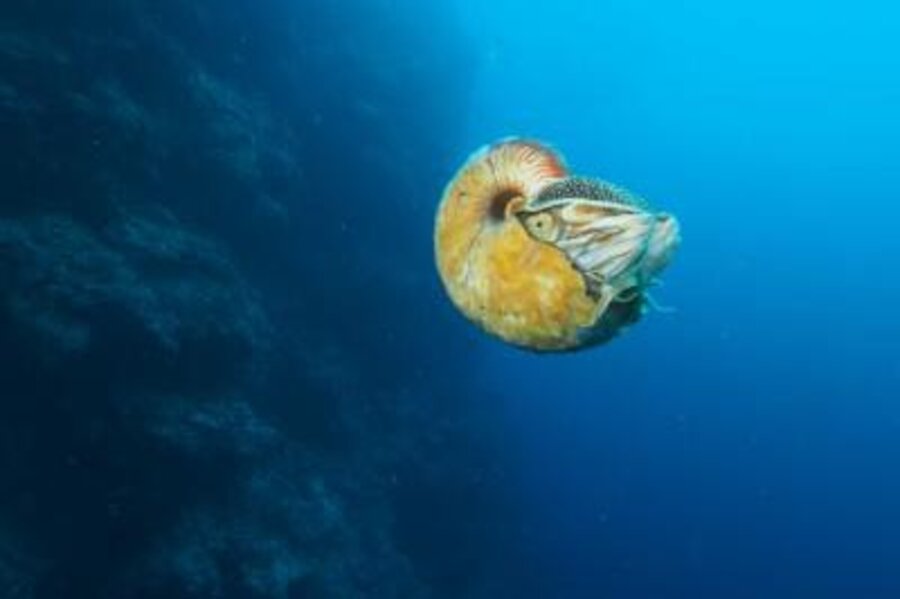Mysterious nautilus, thought extinct, spotted in Papua New Guinea
Loading...
A rare mollusc, previously feared extinct, has been spotted off the coast of Papua New Guinea.
Biologist Peter Ward returned from the South Pacific in early August with news that he had seen what he considers to be the world’s rarest animal.
The University of Washington professor was part of the original discovery team that first found Allonautilus scrobiculatus, a“fuzzy, slimy” mollusc with an iconic whirled shell that's sometimes referred to as the crusty nautilus, 31 years ago. It hasn't been spotted in nearly three decades – until now.
When Mr. Ward returned to the area this summer, he and his colleagues feared the “living fossil” had perhaps gone extinct, threatened as they are by shell hunting, and environmental changes. He was overjoyed to catch another glimpse of the rare mollusc, but said in an interview with the university newspaper that such encounters could become even more infrequent if illegal fishing practices could continue.
With the knowledge that nautiluses are superior scavengers, the research team submerged bait – fish and chicken – between 500 and 1,300 feet below the sea surface, and filmed the action around the lure in 12 hour increments.
When the nautilus first appeared on the biologists’ screen this past July, the creature had not been spotted since 1986.
“We not only found them, we captured the first digital images of them alive in the wild, and attached tracking devices that are revealing some of the oldest and deepest secrets of their survival,” Ward wrote in a guest blog post for National Geographic.
Ward and a colleague first discovered the rare critter off of Papua New Guinea's Ndrova Island. Nautiluses are small, distant cousins of squid and cuttlefish from an ancient lineage whose shells appear over the fossil record over a 500 million year period. Ward says this summer’s sighting means that there is still more to learn about these creatures.
“Before this, two humans had seen Allonautilus scrobiculatus,” Ward told UW Today. “My colleague Bruce Saunders from Bryn Mawr College found Allonautilus first, and I saw them a few weeks later.”
Illegal fishing and “mining” operations for nautilus shells have already decimated some populations, Ward told UW Today. In September, the US Fish and Wildlife Service will decide whether to advocate for nautiluses to become a protected species under the Convention on International Trade in Endangered Species of Wildlife.
“As it stands now, nautilus mining could cause nautiluses to go extinct,” said Ward. “This could be the rarest animal in the world. We need to know if Allonautilus is anywhere else, and we won’t know until we go out there and look.”






